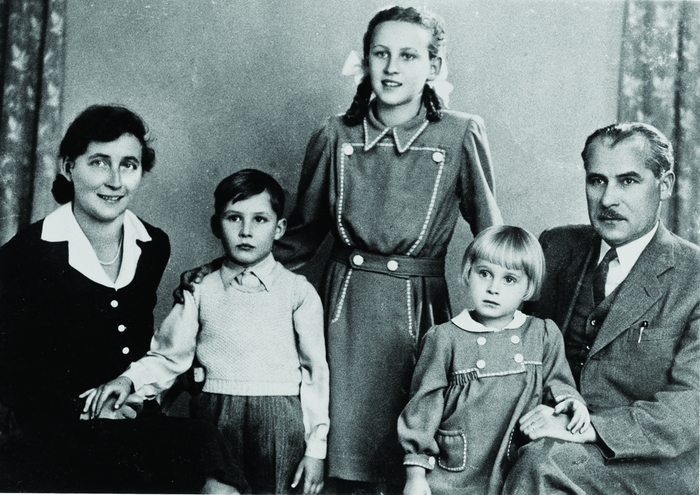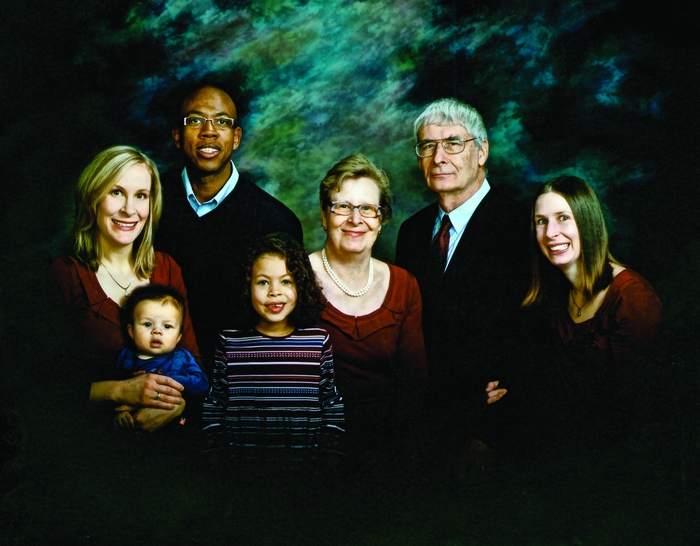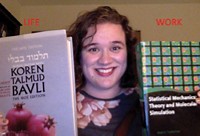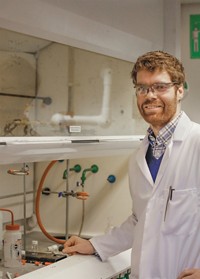Advertisement
Grab your lab coat. Let's get started
Welcome!
Welcome!
Create an account below to get 6 C&EN articles per month, receive newsletters and more - all free.
It seems this is your first time logging in online. Please enter the following information to continue.
As an ACS member you automatically get access to this site. All we need is few more details to create your reading experience.
Not you? Sign in with a different account.
Not you? Sign in with a different account.
ERROR 1
ERROR 1
ERROR 2
ERROR 2
ERROR 2
ERROR 2
ERROR 2
Password and Confirm password must match.
If you have an ACS member number, please enter it here so we can link this account to your membership. (optional)
ERROR 2
ACS values your privacy. By submitting your information, you are gaining access to C&EN and subscribing to our weekly newsletter. We use the information you provide to make your reading experience better, and we will never sell your data to third party members.
People
Chemistry Aficionado And Lifelong Learner
Priestley Medalist Peter J. Stang emerged from adversity to catalyze advances in chemistry and serve as one of the field’s leading statesmen
by Mitch Jacoby
April 8, 2013
| A version of this story appeared in
Volume 91, Issue 14
Peter J. Stang’s earliest interest in chemistry was sparked during his elementary school years. But unlike some prominent researchers who discover their calling for science as youngsters, he wasn’t ready to commit.
“I almost became a historian,” Stang says. In the end, however, he couldn’t avoid the call of chemistry.
For his lifetime achievements in chemistry, the University of Utah Distinguished Professor of Chemistry is this year’s recipient of the Priestley Medal, the highest honor bestowed by the American Chemical Society. Stang is being recognized for his research contributions in molecular self-assembly to make supersized Lego-type molecules and for his service to chemistry journals, most notably as the current editor-in-chief of ACS’s flagship research publication, the Journal of the American Chemical Society.
The story of the challenges Stang faced as he went on to pursue an education and award-winning academic career in chemistry is as interesting as the accomplishments themselves.
Growing up in Hungary just after World War II, Stang was inspired by influential educators who taught in the country’s elite “gymnasium.” This famous preparatory high school system had just a generation earlier produced several of the world’s most celebrated atomic physicists, who helped explain properties of matter.
The teacher who was designated to serve as head mentor for Stang and his classmates throughout their high school years was “an enthusiastic and passionate history teacher,” Stang recalls. “He brought the subject to life, especially ancient Greek and Roman history.” The teacher’s zeal helped turn Stang into a history and biography reader. It also inspired the young student, at least for a short while, to consider following a path to a profession in the humanities.
“But soon science got ahold of me, and after all these years, it hasn’t loosened its grip,” Stang says.
The pull of other areas of inquiry on Stang hasn’t weakened much either. In fact, on talking with Stang it becomes clear that he is deeply interested, not only in disparate chemistry subjects but also in a range of other scientific and nonscientific topics.

\

\
When this 1940s photo (top) was taken, Stang lived in Hungary with his parents and two sisters. Later, while attending graduate school at UC Berkeley, Stang met Christine, his wife of 44 years. They have two daughters, Antonia (left) and Alexandra. Also pictured are Antonia’s husband, Michael, and their children, Cameron and Lauren.
Some 71-year-olds may be content to stick to what they know best. But not Stang. His nature as a lifelong learner keeps him looking for new challenges and weighing the benefits of switching research directions.
That nature, and the curiosity that lies at its core, showed itself early in the budding experimentalist’s extracurricular activities. Like young teens everywhere, Stang was fascinated by chemical reactions that generate color changes and by things that burn brightly and go boom. But he wasn’t content being a spectator. He preferred to run the show.
So with a little pocket money and an enthusiast’s knowledge of fun reagents to play with, Stang availed himself of the sodium hydroxide, concentrated acids, potassium nitrate, phenolphthalein, and other chemicals that were sold in neighborhood drugstores in his youth. In those days, businesses in Hungary didn’t worry about being sued, Stang asserts. They sold the stuff to kids.
“I had fun experimenting in my home lab,” Stang recalls. He worked alone or with a like-minded classmate with whom he sometimes traded chemicals and chemistry tips. His parents neither encouraged nor discouraged him from dabbling in chemistry. But they might have been more vocal had they witnessed one of their son’s most dangerous experiments.
Leaning back in a desk chair in his Utah office, Stang calls up a story from more than 55 years ago about the way he made and played with slow-burning black gunpowder. “It’s pretty simple to make,” he says. “You just need to mix sulfur, charcoal, and potassium nitrate in the correct ratio.”
But the slow-burning formulation didn’t provide quite enough bang for the buck. When lit, it just fizzled and sputtered. So in an effort to bump up the excitement, the young chemist added magnesium turnings, knowing that the metal strips flared up brightly when held over a flame.
Flared up is putting things mildly. “When I lit the mixture, the whole thing burned suddenly and explosively,” Stang says excitedly. “I almost lost my eyesight.”
Looking back on the experience with the clarity of hindsight, Stang adds that “it was a valuable and hard-learned lesson in safety.”
Stang’s other youthful activities tended to be a lot safer. Self-described as “kind of shy and not very outgoing,” he stayed away from team sports like soccer, which was popular among his peers. He preferred solo activities such as swimming, and he boasts that as a 15-year-old he could swim several miles in a single stretch. And like other Hungarians who grew up within walking distance of Siófok, a vacation destination on the southern shores of Lake Balaton, Stang loved ice skating on the frozen lake.
He was also a solid table tennis player: “I can still play a pretty decent game,” he says, bragging a little. And he invested himself in chess with the enthusiasm and analytical rigor common of youngsters who take naturally to mathematics and physical science.
But the experiments in the home lab, the sports, the hobbies, and even the education soon came to a screeching halt. Early into Stang’s high school education, the aftermath of the failed Hungarian Revolution in the fall of 1956 rapidly turned life upside down. For a few days, relatively weak Hungarian forces appeared to hold the upper hand against occupying Soviet troops. The Hungarians managed to force the Soviets to retreat from Budapest, and the country celebrated its freedom.

But that freedom was short-lived. It ended dramatically early on the morning of Nov. 4. Without warning, an overwhelming Russian force with rows of tanks and armored cars rolled into Budapest and swiftly put down the uprising.
In the days that followed, some 200,000 Hungarians, roughly 2% of the population, fled the country. For Stang, his parents, and two sisters, the thought of escape was risky and frightening. But with no prospects for a secure, happy, and productive life in postrevolution Hungary, the family headed westward, hoping to make it to Austria.
Stang remembers well the date his family embarked on their journey; it was his mother’s birthday, Nov. 19. Like many Hungarians, the Stangs rode a train as far west as was safe. In those days, citizens weren’t permitted to approach within several miles of their own border without a permit, and Hungarian and Soviet guards patrolled train stations near the border looking for violators.
Stang’s family got off the train in the middle of nowhere, about 20 miles from the Austrian border. They found themselves enmeshed in a group of roughly 25 strangers, all of whom were trying to escape. Somehow the group enlisted the services of a local who knew the forests and farmland that lay between them and their freedom. And so it was that the Stang family pushed on toward the border on foot, hiding during the day to avoid patrols and walking at night under the cover of darkness.
The darkness offered a measure of protection from border guards, but it also made keeping the family together difficult. Stang recounts a horrifying moment when his parents discovered that his 12-year-old sister had disappeared.
“My mother thought she was with my father, and my father thought she was with my mother,” he says. Panic-stricken, the family broke from the group and doubled back.
The search lasted just minutes, though. Stang’s sister had simply grown too tired to go on, and she plopped down in the darkness to rest, unaware that her brief respite would make her family fear the worst.
Terror soon struck again. As the loosely connected group of strangers drew near the Austrian border, they were careful to move silently in the dark. But not careful enough.
“Three armed Hungarian border guards snuck up on us and yelled: ‘Stop! Where are you going?’ ” Stang relates.

The guards already knew full well where the group was heading. And the would-be escapees knew if they were arrested, they could end up jailed or incarcerated in a Soviet work camp.
After a brief discussion, the guards appeared to grow sympathetic toward their countrymen. Stang recounts the way two of the guards stayed with the group while the third went to check if the coast was clear of patrolling Soviet units. It was an incredibly lucky break. Or was it?
“We didn’t know if he was really checking on the Russians or calling for reinforcements,” Stang says. “The longer we sat there the more terrified we became. That was the longest 25 minutes of my life.”
Luck stayed with the Stang family that night. An hour or two later, in the dark, they crossed the border from Hungary into an Austrian village.
The family stayed briefly in a refugee camp, where Stang’s father put his language skills to good use. As a young man, the elder Stang had spent more than 15 years in the West working in the hotel and travel industry. As a result, he was fluent in French and English, in addition to Hungarian and German, which the whole family spoke. Stang’s father could even get by in Spanish. Those language skills landed him a position as a translator in the camp, a job that won the family priority status for immigration to the U.S. And so within a month of their harrowing escape, the Stangs arrived in the U.S., and a couple of weeks later, they settled in Chicago.
Moving to a new country, a new city, and new school can be tough, especially for a teenager who doesn’t know the language. But it didn’t take Stang long to find his footing. In addition to being naturally driven to succeed in school, Stang got help from a German-speaking classmate who assisted as translator at the beginning. Furthermore, his family studied English at night school to quickly immerse themselves in the language.

Of all the classes during school hours and after, and all the formal and informal opportunities of which Stang availed himself to learn the language and ways of his new home, the richest experience, in Stang’s view, came from on-the-job training he received in “Americana” while working as a busboy and waiter in the glitzy Edgewater Beach Hotel, a bustling establishment on Chicago’s far north side.
Throughout his high school and college years, Stang worked at the celebrated hotel, which hosted U.S. presidents and popular entertainers, a veritable who’s who of celebrities. Standards were high, Stang says. Patrons dressed formally.
“It was the perfect job for me,” Stang insists, “because I interacted constantly with guests and coworkers, which forced me to learn English.” Stang remarks that the experience also taught him about American customs, culture, and etiquette, adding that he still sets a formal dinner table at home when entertaining guests.
Asked whether he was a good waiter and busboy, Stang laughs. “I spilled everything imaginable on customers. Hot coffee, red wine, prime rib juice. You name it, I spilled it!”
Apparently, Stang’s occasional bouts of clumsiness—he once dropped an entire tray of dinner plates—had little effect on job security. He worked there for roughly six years. And his position at the hotel was solid enough that the managers always permitted Stang to work flexible hours to accommodate his number one priority in those days: his studies.
“I was under a lot of pressure to succeed in school,” Stang says. And with the added responsibility of holding a job, he found little time to socialize. “I missed out on some of the normal mischief that youngsters get into,” he says. But he has no regrets. Stang’s studiousness and especially his commitment to learning chemistry as an undergraduate student at DePaul University earned him recognition. With that recognition came the opportunity to work with Robert C. Miller, a DePaul chemistry instructor who was instrumental in shaping Stang’s future.
“He was very tough but inspirational,” Stang recalls. When students did especially well on an exam, Miller would write a note: “Done like a pro!” or “Done like a chemist should!”
“Those comments really made me feel good,” Stang says. “They boosted my confidence.”
Advertisement
It was in Miller’s lab that Stang first experienced “the thrill of making new compounds.” Although Miller was always ready to help and advise, he gave students like Stang a lot of independence with regard to synthesizing the phosphorus compounds the group studied and collecting the infrared spectra and other data needed to analyze the products. “It was a very exciting experience,” Stang says. Miller’s style of mentoring is one that Stang would adopt for himself.
Eager to continue experiencing the joy of discovery, Stang headed to the University of California, Berkeley, for graduate studies. There he conducted research and completed his Ph.D. with renowned physical organic chemist Andrew Streitwieser Jr. The expertise Stang developed during his Berkeley days and later as a postdoctoral researcher at Princeton University cemented his commitment to specializing in physical organic chemistry.
By 1969, Stang had accepted a faculty position at the University of Utah, where, together with the research group he built, he carried out seminal studies on the preparation and reactions of intermediate vinyl cations, alkylidene carbenes, and other reactive species. These investigations have collectively deepened understanding in hydrocarbon chemistry and broadened the synthetic utility of cross-coupling reactions, a set of indispensable tools widely used in organic and materials chemistry. This specialty area of organic chemistry formed the cornerstone of Stang’s research program for more than 20 years.

But Stang’s drive to explore new areas led him to shift gears. For the past 20-plus years, Stang and his research group have focused on supramolecular chemistry and on developing novel methods of molecular self-assembly based on relatively weak metal-ligand bonds. It is his scientific contributions in these areas, most notably his development of a predictive strategy that has come to be known as the “directional bonding approach,” that in large part earned Stang this year’s Priestley Medal.
These supramolecular chemistry innovations have been used by many research groups to design and prepare eclectic two- and three-dimensional complex chemical structures, such as cuboctahedrons, dodecahedrons, truncated tetrahedrons, and other nanosized metallacycles and metallacages. Chemists believe the techniques and products generated by them are poised to make an impact in drug delivery and in other applications of host-guest chemistry, such as multimetal catalysis.
Beyond Stang’s research contributions, he is also recognized for his key role in enhancing the prestige of ACS internationally and for his service as an ACS associate journal editor and as editor-in-chief of the Journal of Organic Chemistry (2000–01) and the Journal of the American Chemical Society (2002–present). This service has earned Stang a special kind admiration from his colleagues.
“Peter has worked hard and succeeded in making JACS a world-class journal,” says UC Berkeley chemistry professor and fellow Hungarian and Priestley Medalist Gabor A. Somorjai. Somorjai adds that Stang is “a dignified statesman who put his stamp on ACS’s international connections, especially in China.”
Regarding his service to the chemistry community, “no living chemist has comparable credentials,” Northwestern University chemistry professor Chad A. Mirkin states emphatically. In addition to citing Stang’s 30 years of editorial service to ACS journals, Mirkin points out that the Utah chemist also served the American Association for the Advancement of Science and the Gordon Research Conferences in several capacities.
What doesn’t come through in an award citation or on the many pages of a senior academic’s résumé is his or her personality and the nature of that person’s relationships with students and research group members. Just a few minutes of conversation with a handful of Stang’s past and present coworkers paints a picture of a dedicated, resourceful, thoughtful, and caring mentor who puts student success at the top of his priorities.
“Peter gave me the freedom to work independently but was always available to offer advice and direction to make sure I didn’t flounder,” recalls Rik R. Tykwinski. He completed his Ph.D. studies with Stang in 1994 and now serves as a professor of chemistry and pharmacy at Friedrich Alexander University, in Erlangen-Nürnberg, Germany.

Tykwinski found Stang to be personable but adds that his adviser nearly always maintained a professional demeanor in the lab. Later, after Tykwinski graduated and the formal professor-student relationship no longer applied, the younger man was rather surprised to learn that Stang is “actually quite funny and has a great sense of humor.”
One student, who completed his Ph.D. work with Stang in 1998, Bogdan Z. Olenyuk, also describes Stang as a dedicated adviser. “Peter always dropped what he was doing to make himself available, including on Saturday and Sunday mornings,” he says.
But Olenyuk, who is a professor of pharmacology and pharmaceutical sciences at the University of Southern California, relates a personal story that characterizes Stang as an affectionate man who cares about the welfare of his students and their families, even after the students have moved on.
As a graduate student, Olenyuk sent much of his monthly stipend to his family in Ukraine. His father died shortly before Olenyuk moved to Utah, and his mother was ill with cancer. Her condition worsened, and by 1999, a year after Olenyuk left Utah to do postdoctoral work, she needed a lung operation that was going to cost tens of thousands of dollars, which neither she nor her son could afford.
“Peter learned about the situation and insisted on loaning me the money to pay for the medical expenses,” Olenyuk says. Stang was adamant about relieving his former student’s financial worries so that he could focus on finding a faculty position. “I’m very grateful to Peter for his help,” Olenyuk says. “This was no small gesture.”
Even after nearly 50 years of exploring and enjoying the wonders of chemistry and helping others do the same, Stang’s joy of discovery hasn’t faded. He is still looking for new topics of exploration and values interdisciplinary collaborations now more than ever because “they challenge me,” he says.
“If I were younger, I would explore neuroscience and the chemical basis of memory,” Stang reveals. No surprise that he desires to reach far from his academic comfort zone. That’s just the nature of a lifelong learner.






Join the conversation
Contact the reporter
Submit a Letter to the Editor for publication
Engage with us on Twitter